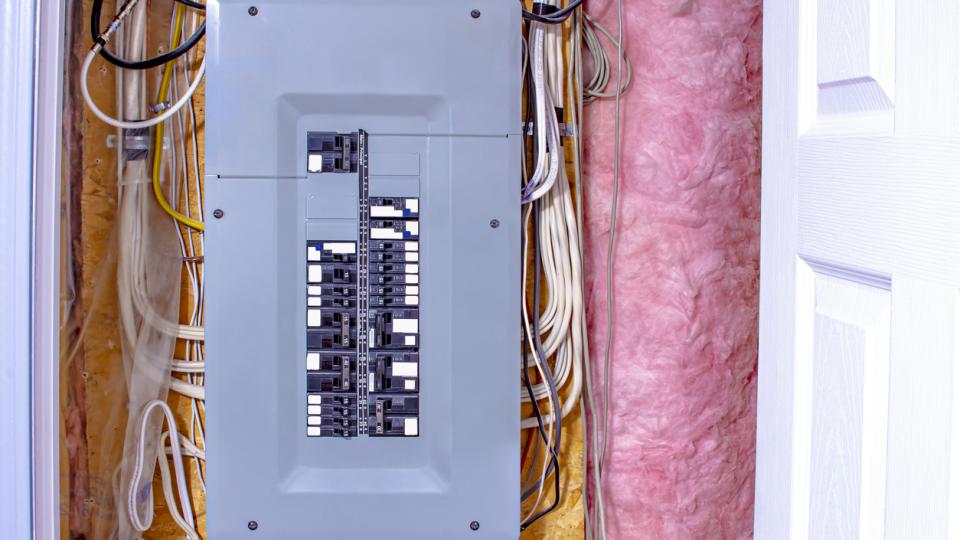Your home’s breaker panel — also known as the electrical panel or circuit breaker box — is the nerve center of your electrical system. It controls and distributes electricity throughout your home, ensuring that everything from your lights and appliances to your heating and cooling systems operate smoothly. But have you ever wondered what all those switches in the breaker panel actually do? Understanding what the switches control and how they work can help you stay safe and troubleshoot basic electrical issues.
Here’s a breakdown of what the switches on your breaker panel mean and how they protect your home.
1. Main Breaker: The Master Switch
The largest switch at the top or center of your breaker panel is the main breaker. This switch controls the power supply for your entire home. When the main breaker is in the “on” position, electricity flows to the individual circuits throughout your house.
Why It’s Important:
- The main breaker is designed to shut off all power to your home in case of an emergency or if you need to perform electrical work.
- It protects your home from electrical overload by shutting off if the total electrical load exceeds safe limits.
If your home loses power completely, checking the main breaker is a good first step. If it’s tripped, resetting it may restore power.
2. Individual Circuit Breakers: Power to Specific Areas
Below the main breaker, you’ll find multiple smaller switches known as individual circuit breakers. Each of these breakers controls the electrical supply to specific areas or appliances in your home.
Common Circuit Breaker Assignments:
- Kitchen outlets and appliances
- Bathroom lights and fans
- Living room outlets and lighting
- Heating and air conditioning systems
- Garage or outdoor circuits
These breakers are designed to “trip” or shut off if there’s an electrical overload or short circuit in a specific area, preventing electrical fires and protecting your wiring.
3. Double-Pole Breakers: High-Powered Appliances
Some of the switches in your panel may be double-pole breakers, which are larger and take up two slots. These breakers are used to power high-voltage appliances that require more electricity to operate safely.
Appliances Typically Using Double-Pole Breakers:
- Electric ovens and ranges
- Water heaters
- Central air conditioning units
- Clothes dryers
Double-pole breakers provide 240 volts of power and protect these high-powered appliances by tripping if they detect a surge or fault.
4. GFCI and AFCI Breakers: Extra Safety Layers
Modern homes may have additional specialized breakers like GFCI (Ground Fault Circuit Interrupter) and AFCI (Arc Fault Circuit Interrupter) breakers.
GFCI Breakers:
- Protect against electrical shock by shutting off power if they detect a ground fault, such as electricity flowing through water.
- Commonly used in areas with high moisture, such as bathrooms, kitchens, and outdoor outlets.
AFCI Breakers:
- Detect dangerous electrical arcs that can cause fires and shut off the power to prevent damage.
- Typically required in bedrooms, living rooms, and other areas with high electrical usage.
5. Labeling: Know What Each Breaker Controls
To make things easier, the switches in your breaker panel should be labeled clearly. Labels identify which breaker controls each circuit in your home, helping you quickly locate and reset the right breaker if needed.
Why It Matters:
- Labeled breakers save time during power outages or electrical issues.
- Knowing which breaker controls what allows you to safely turn off power when performing maintenance or making repairs.
If your panel isn’t labeled or the labels are outdated, take the time to identify and mark each breaker correctly.
What to Do If a Breaker Trips
When a breaker trips, it flips to the “off” position to prevent damage or fire. If this happens:
- Identify which breaker has tripped by looking for one that’s out of alignment.
- Switch it fully to the “off” position before turning it back “on.”
- If the breaker trips again immediately, this could indicate a serious electrical issue that needs professional attention.
While it’s easy to reset a tripped breaker, frequent tripping, burning smells, or buzzing sounds coming from your breaker panel could signal a more serious electrical problem. If you notice any of these signs, it’s best to contact a licensed electrician to inspect your panel and wiring.
How TrustDALE Can Help:
If you need a reliable, certified electrician to inspect or repair your breaker panel, TrustDALE.com is your go-to resource. TrustDALE connects homeowners with trusted professionals who meet the highest standards of quality and customer service. Plus, when you choose a TrustDALE Certified Electrician, your service is backed by the TrustDALE $10,000 Make It Right Guarantee, giving you peace of mind that the job will be done right the first time.
Visit TrustDALE.com today to find a certified electrician near you.

